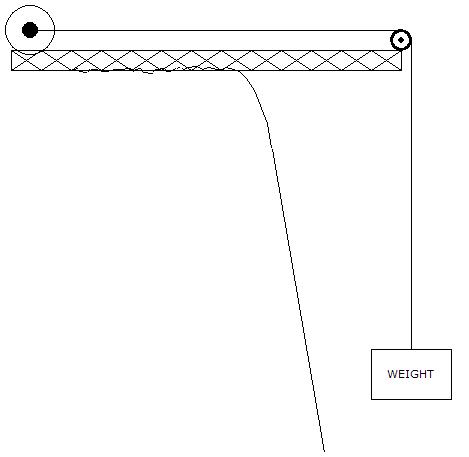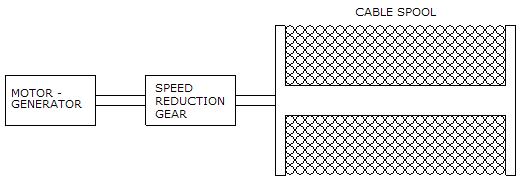|
Lifted Weight Energy Storage
|
 |
| Some time ago I was reading about all
the various ways that off-grid power system owners have tried to store their excess
energy. In a typical off-grid system, a mixture of energy producing devices
might all be used at the same time. These may include photovoltaic solar panels and
water heating panels mounted on a roof and a few wind generators here and there. |
| What off-grid users would
love to have is a cheap way to capture and store the excess energy produced by their
wind generators during a long stretch of windy days. One storage method, which
has been suggested, is a simple “lifted weight” technique. |
| As illustrated below, a
heavy weight is tied to a mechanical system of pulleys and to an efficient speed
reduction gear transmission system. The moving weight is thus converted to the
spinning motion of a motor-generator. To lift the weight, electrical power is
routed to the motor. By reversing the process, energy stored in the weight’s
position can then be extracted by spinning the motor in the reverse direction,
producing electricity as the weight drops. Let’s see how much energy could be stored
using this method. |
|

|
|

|
| The basic equation used
to define the energy stored in a weight is shown below. A block weighing X kilograms
lifted to a high of h meters will represent the stored energy in joules, which is
also watt-seconds. The 9.8 factor is the gravitational constant for earth. We will
make it easier by ignoring all the mechanical losses. |
Energy in joules =
(weight kg)(9.8)(h meters)
Joules/3600 =
watt-hours
|
| OK, let’s say we had a
big block of concrete weighing 10,000 kilograms (22,000 pounds). Let’s say we
lifted the weight 10 meters off the ground. According to the equation, the
energy stored is: |
10,000kg x 9.8 x 10m = 980,000 joules or 272
watt-hours.
|
| Well, this is not much
energy. By comparison, a 12v lead acid car battery with a 50 Amp-hour rating would
store 600 watt-hours, which is about twice as much energy as the big lifted weight.
Clearly to be of any use, the concrete block would have to be much larger or the
distance the weight moves has to be much longer. It certainly might be
possible use a heavy truss to suspend the weight over a deep canyon but few off-grid
homes have such canyons or hills in their back yard. |
| Could the weight be
bigger? A cubic yard of concrete might weigh about 3800 pounds. A single
big cement truck hauling 10 cubic yards would be able to produce a concrete block
weighing perhaps 38,000 pounds or 17,000 kilograms. A concrete tub like
structure could built and then filled with loose rocks or gravel. So, perhaps
a mass weighing 200,000 kilograms could be made and lifted 10 meters of the ground.
But, even with this massive block, the total energy stored would only be 5444
watt-hours. This would be equal to a 12v battery with a 450 Amp-hour rating. This
just does not seem very practical. A larger storage battery would seem like a
better solution. |
| But, suppose this whole
concept was moved to Mars. The gravity constant on Mars is only 3.69, so more mass
would be needed. But, Mars has some of the deepest canyons in the solar
system. Some canyons measure 8000 meters deep. Now, if we suspended a weight
of 10,000 kilograms on Mars with a height of 8000 meters, the stored energy would
be: |
10,000kg x 3.69 x 8,000 or 295M joules or 82,000
watt-hours. Now this is much better. A 10KW solar panel on Mars,
cranking out power for 8 hours would be able lift that heavy weight the whole 8KM
distance. The stored energy could then be used a night.
|
| I think the concept could
be scaled way up. I can imagine using some ultra strong rope (perhaps made of
carbon fiber), rated at perhaps 500,000 pounds, which could support a block weighing
perhaps 250,000 pounds or 114,000kg. If such a weight could be moved 8000
meters, then the energy storage would be 932,000 watt-hours or 932 kilowatt-hours.
That is not bad for a simple mechanical energy storage system. |
 |
 |
| Canyons on Mars
|
Canyons on Mars |
|
|
|